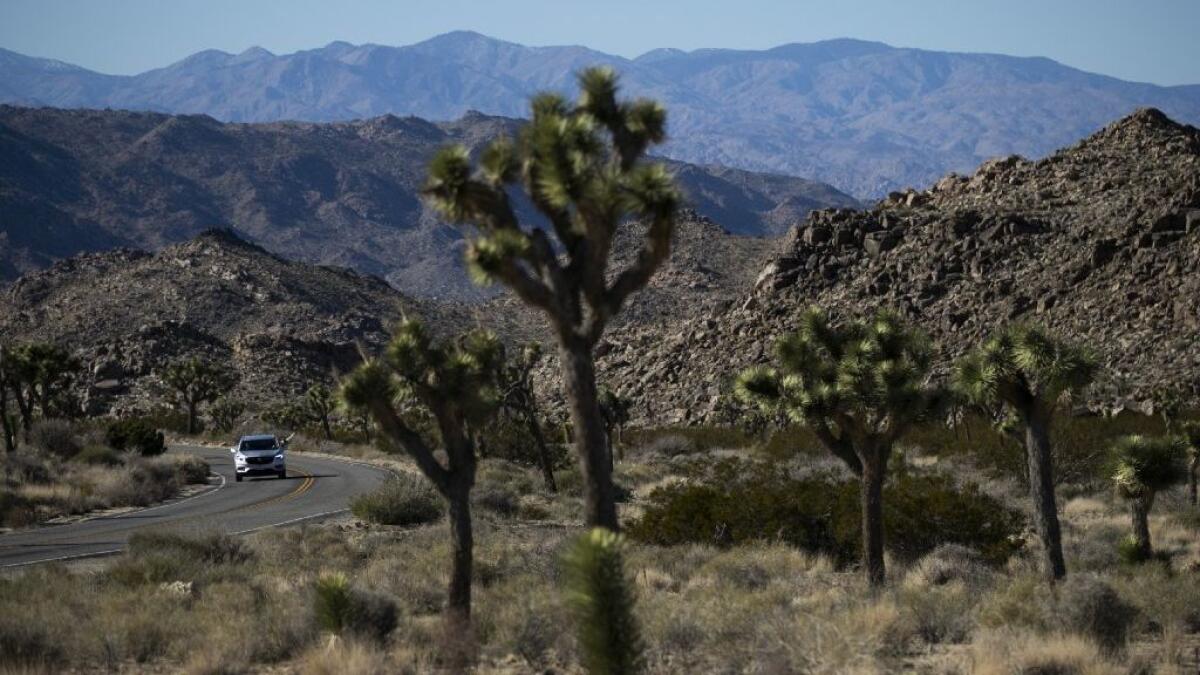As U.N. warns of widespread extinction, California is already losing species

A new United Nations report warning of a global extinction crisis identifies three parts of the world in particular danger: South America, Africa and parts of Asia.
But there are signs of struggle everywhere, notably in California. Though the state boasts some of the most diverse plant and animal life in the United States, California has more than 300 endangered species, from the delta smelt to the birds of the Mojave Desert.
Many are imperiled by loss of habitat, rising ocean temperatures and rural and urban areas’ demand for ever-increasing amounts of fresh water.
Worldwide, the U.N. assessment found that of an estimated 8 million plant and animal species, about 1 million are on the brink of extinction because of the damage humans are inflicting on the Earth through global warming, logging, farming, mining and other activities. It was compiled by 145 expert authors from 50 countries.
The full report won’t be made public until later this year, but a summary released Monday offered a damning assessment of human impacts over the last five decades.
Native species — both plants and animals — have declined by about 20%. About a quarter of species are currently threatened and could disappear within decades. And the global rate of extinction is accelerating.
Here are some stories of what this loss of biodiversity looks like in California:

Mojave Desert birds are disappearing
When Steve Beissinger led a team of scientists from UC Berkeley into Southern California’s Mojave Desert, the landscape looked much as it did in photographs taken at the turn of the 20th century by Joseph Grinnell, a famed biologist. But there was one noticeable difference: The birds were missing.
The group’s research, published in 2018, found that about a third of the 135 bird species known to have called the desert home had declined significantly. Surveys of 61 sites in the Mojave showed they had lost on average 43% of their species.
The numbers were so stark, and so unlike what scientists were seeing in the rest of the state, Beissinger and his doctoral students began to wonder whether climate change had made an already extreme environment almost uninhabitable.
“The long-term change, the drying of these places, as well as the heat, has made it more difficult for species to survive there,” Beissinger said. “You see this collapse of a whole community — not just one or two species, but a lot of them.”
Unlike mountain-dwelling species that are known to climb to higher elevations in search of cooler weather, desert species might not have anywhere else to go.
Other species are not arriving to replace those that are gone. So far, there appears to be only one type of bird whose numbers are increasing in the Mojave: the common raven.
Signs of big trouble in a tiny freshwater fish
Delta smelt are an endangered species caught in a battle between environmentalists trying to save them and farmers who dismiss such efforts as prioritizing fish over people.
First listed as endangered in 1993, the species is now on the verge of extinction. In 2018, the California fish population survey in the Sacramento-San Joaquin Delta, which along with the San Francisco Bay is the fish’s only habitat, could not find a single delta smelt in four months of looking.
Farmers south of the delta who rely on freshwater to sustain lucrative, water-intensive crops like fruit and nuts have essentially competed with the smelt and migrating salmon for water.
And they have an ally in the Trump administration. Interior Secretary David Bernhardt, a former lobbyist for California’s Westlands Water District, has proposed weakening Endangered Species Act protections for the fish in order to send more irrigation water to California farmers.
The delta smelt’s plight is an example of what the U.N. study highlights, said Noah Greenwald, endangered species director for the Center for Biological Diversity, an environmental advocacy group.
“We have economic factors driving things and we’re not necessarily paying attention to the consequences,” he said.
Amphibians in peril
As humans continue to alter the Earth for their benefit, not all animals are experiencing the changes equally. The authors of the U.N. report single out amphibian species, writing that more than 40% of them are threatened and could disappear if loss of habitat and threats from invasive species continue.
The California tiger salamander is an example of this trend. Found mainly in the Central Valley, the salamander is listed as threatened and is likely to become endangered.
Like many other species in this part of the state, it is losing grasslands and low foothills to agriculture and urban sprawl. As humans encroach on their territory, these salamanders have been poisoned by chemicals used to prevent the spread of rodents. They have been hit with an infection that causes deformities and have had their food — mainly snails and insects — killed off by pesticides.
Southern California cougars near an ‘extinction vortex’
The grim future of mountain lions living in isolation in the Santa Monica and Santa Ana mountains has been told many times, turning the species into a symbol of the disappearance of California’s wilderness.
Mountain lions are not listed as threatened or endangered species across California and the state’s Department of Fish and Wildlife considers the overall population “stable.”
But that is not the case in Southern California, where they have been forced into a shrinking habitat, hemmed in by highways and homes. They have been struck and killed by motorists. And in March, National Park Service officials found a 3-year-old mountain lion dead in the Santa Monica Mountains due to internal hemorrhaging in his head and lungs, likely caused by eating rat poison.
In the Santa Monica Mountains, the mountain lion population is now thought to be entering an “extinction vortex.” The population is so small and its genetic pool so limited that, without some form of human intervention, it is possible it will die off entirely.
Research published this year suggests the cats stand a roughly 1-in-4 chance of going extinct in this region in the next 50 years.
More stories from Anna M. Phillips »
More to Read
Get the L.A. Times Politics newsletter
Deeply reported insights into legislation, politics and policy from Sacramento, Washington and beyond. In your inbox three times per week.
You may occasionally receive promotional content from the Los Angeles Times.











